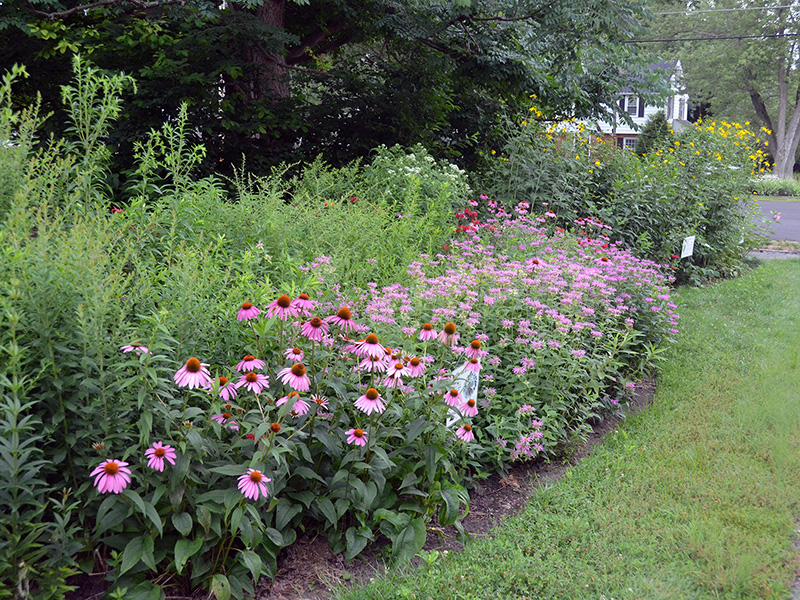
Surprisingly, we don’t have to do a lot of weeding because our closely-spaced plants don’t leave space for many weeds.
But we do “edit” a lot. In other words, we pull out extra plants that in the proper place and in the proper amount would otherwise just be seen as garden plants.
The good news is that there’s not the urgency there would be if we had actual weeds. If we don’t weed out the jewelweed today, for example, next week is fine since the worst that could happen is that we have more “real plants” than we had planned. (For more on this, see Maintaining it.)

The hardest thing about this was to get the courage to pull and compost extra plants that I would otherwise be wanting to plant! I learned to be more ruthless about this since otherwise they’d be crowding out less aggressive plants. Prime examples are some types of goldenrods and some asters.
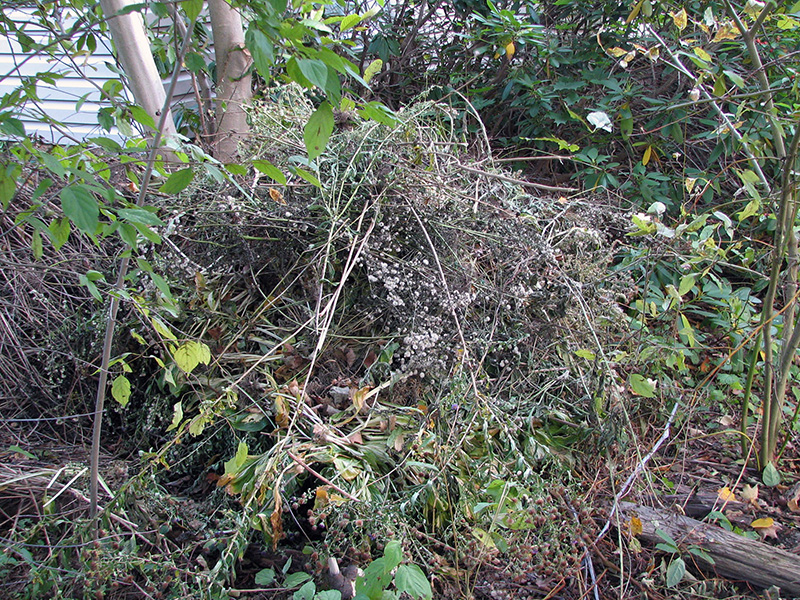
When we do weed out plants, we never bag them and put them out to the curb as routinely happens in most conventionally-managed landscapes.
We generally put these weeded-out plants either in our “official” compost bin in the backyard or in my unofficial compost heap behind the bushes in the front yard (shown here).
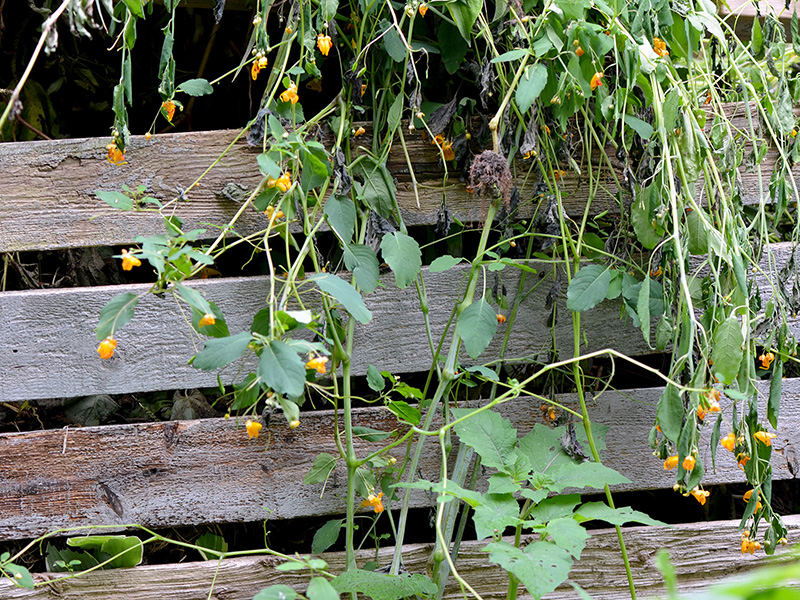
A few years ago, John created a more “official” composter in an out-of-the-way place in the front yard, which is much neater than what had became an unruly pile. (A simple pile would have been fine, however, if it hadn’t been in our front yard.)
After a few years, we’ve routinely removed buckets and buckets of beautiful, rich compost from this pile, which we added to our edible garden and to our woodland garden area since those plants are accustomed to rich forest soil.
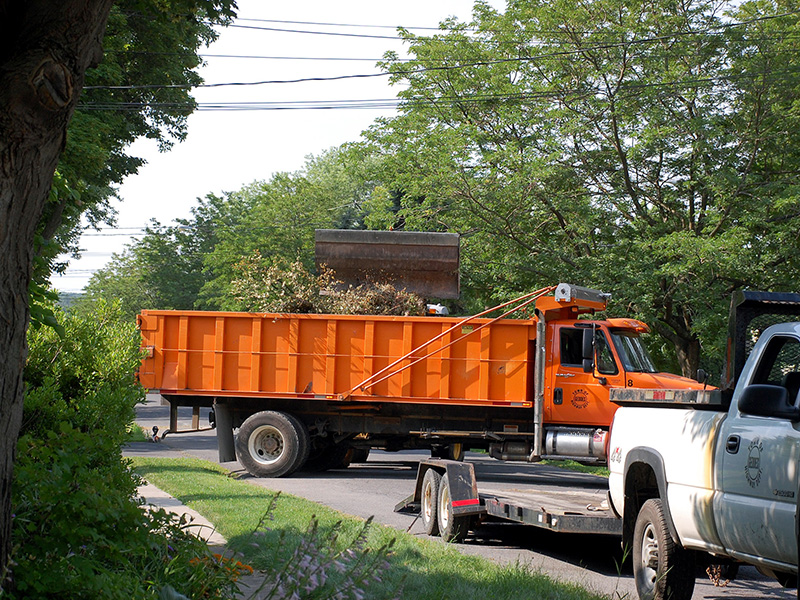
Our town uses a lot of resources collecting yard waste. Shouldn’t all this plant material stay on the property where it grew, both for environmental reasons and for our town’s finances?
Why should our taxes be used to drive huge trucks around carting away plant material that could simply decompose on each person’s property?
IMPORTANT: We don’t put undesirable weeds that are going to seed or plants that are diseased into our compost pile! But we don’t put these noxious plants at the curb either. They go in the trash in a black plastic bag which then goes to the county incinerator (probably the only good thing about the incinerator…)
Weeding in place
But sometimes I don’t bother with the composter, especially with herbaceous plants. (Woodies go into a pile out back or some even out to the curb for yard waste pickup.)
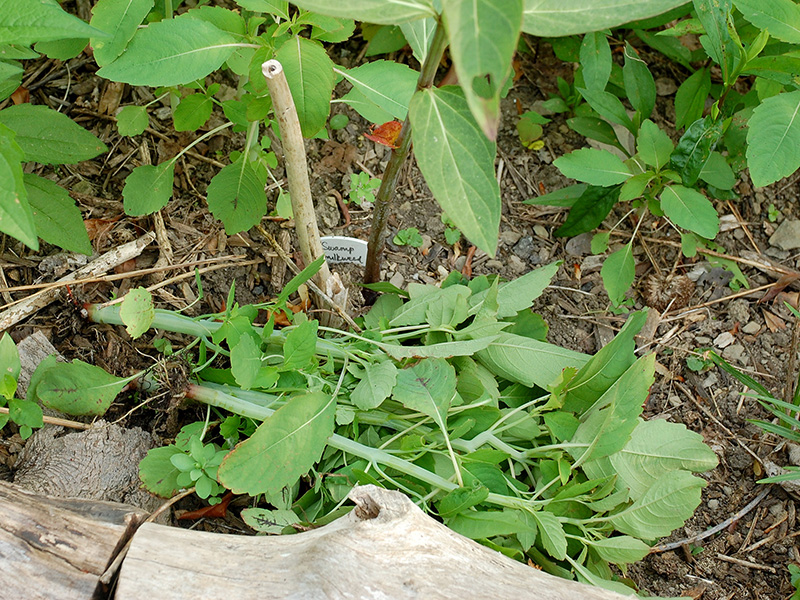
Quite often, if I’m just casually grabbing a weed or two, I simply drop the weeded-out material nearby and let it decompose in place.
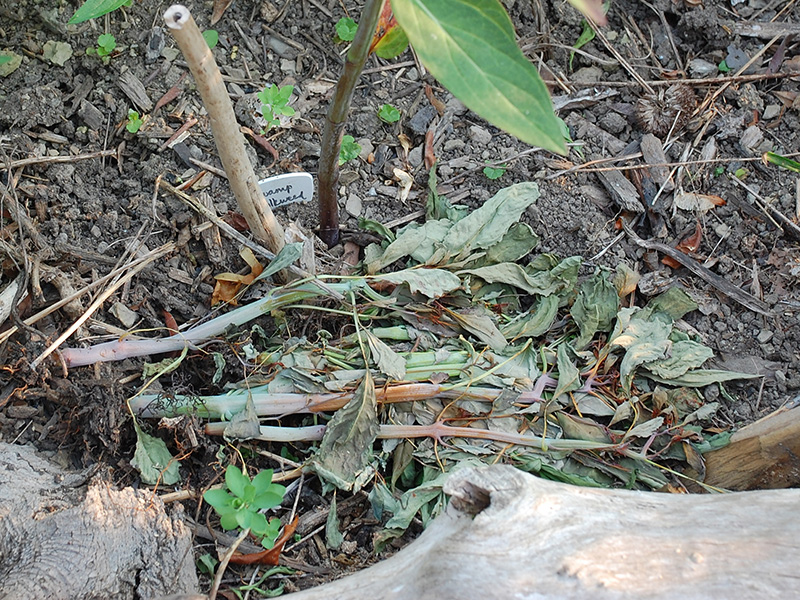
The next day, these weeded-out plants (in this case jewelweed) are already less noticeable.
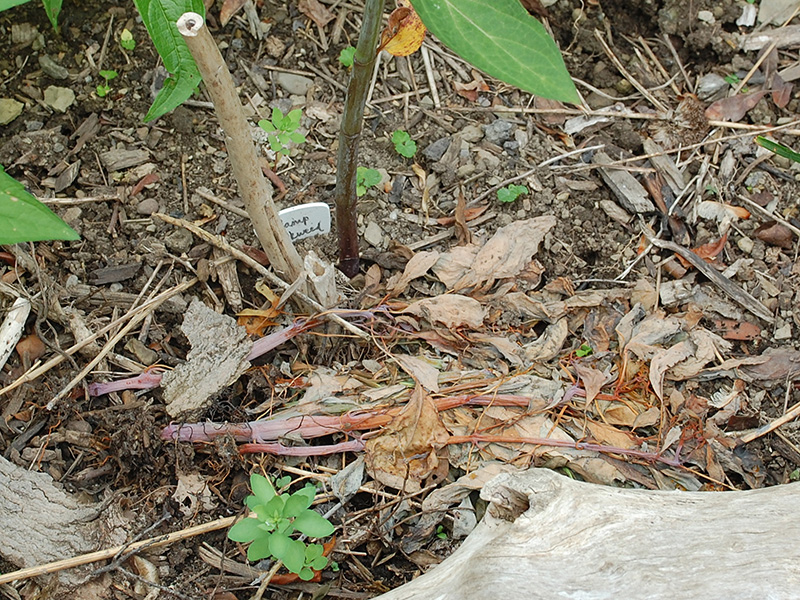
By the fourth day, someone passing by wouldn’t even notice them. These fleshy jewelweeds decompose faster than sturdier plants, but all will decompose faster than you’d think.
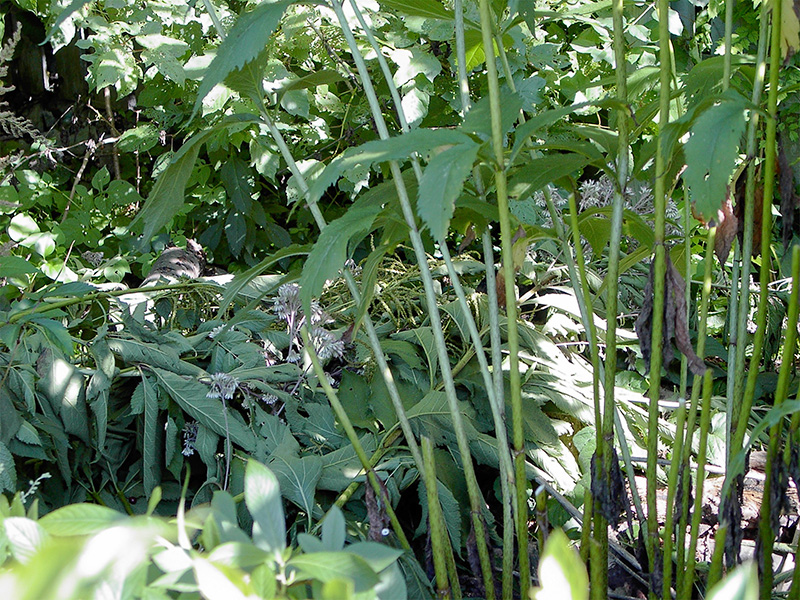
For larger weeded-out plants such as these joe-pye stems, I usually just tuck them behind or under other plants so they’re less noticeable.
They’re already on their way to enriching the soil.
Weed or feed?
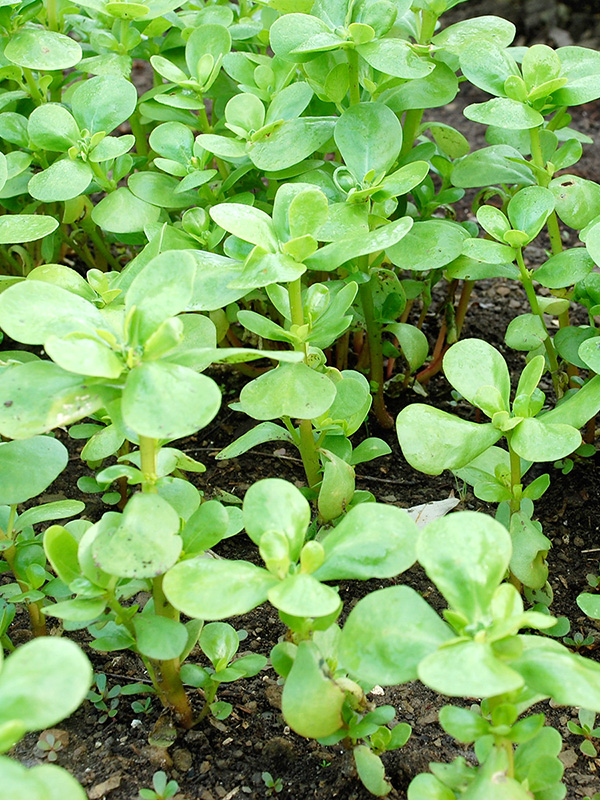
After railing against the onslaught of purslane here, there, and everywhere, we read that it’s an excellent source of omega-3s — and that it’s a tasty addition to salads, commonly used in other countries. We now sometimes harvest it to add to our salads, though I admit we aren’t particularly fond of it.
(We don’t use any that’s growing near the street, though.)
We haven’t tried lambs quarters, though it’s said to be another healthy, tasty green. It hasn’t appeared in our yard, and we’re hesitant to deliberately add something that 1) isn’t native, and 2) produces so many seeds that it could become a real problem.
Garlic mustard is another non-native edible green, but it’s not something we would ever deliberately introduce. If we already had a lot of it, though, it would be another salad addition, pesto etc. Our goal, though, would be to work to eradicate it, not just use it for food. Garlic mustard is too destructive to our natural areas to let grow even for our own food.
Our weeds
“Weed” is generally used as a pejorative term. What is a weed anyway?
Unfortunately it is used in the common names of very important and beautiful native plants, such as milk”weed” and joe-pye “weed.”
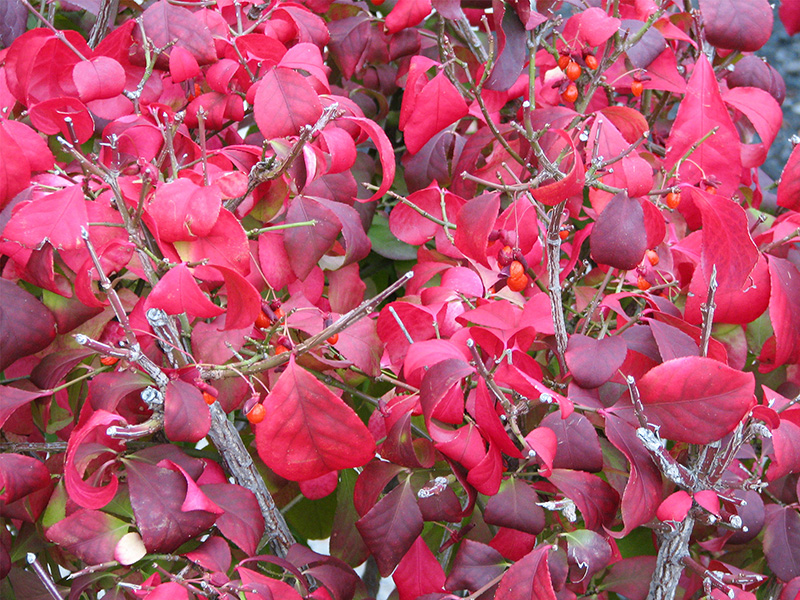
And conversely, some of the worst weeds — in terms of being an undesirable plant — are non-native plants such as Norway maple, burning bush (pictured), or Japanese barberry that invade our native ecosystems.
I long ago got rid of these non-native invasive plants that can negatively impact our landscape and beyond, such as our old burning bush, Japanese barberries, or Norway maples.
We still have “weeds” though, which I think of as belonging to one of three categories.
Category 1 – merely annoying
Our two nemeses are yellow wood sorrel (Oxalis stricta) and petty spurge (below). Fortunately neither one is a noxious weed, and they’re both quite short and easy to pull out (though the sorrel’s roots sometimes remain in the ground). But there SO MANY of them! They’re everywhere and become very annoying aesthetically.
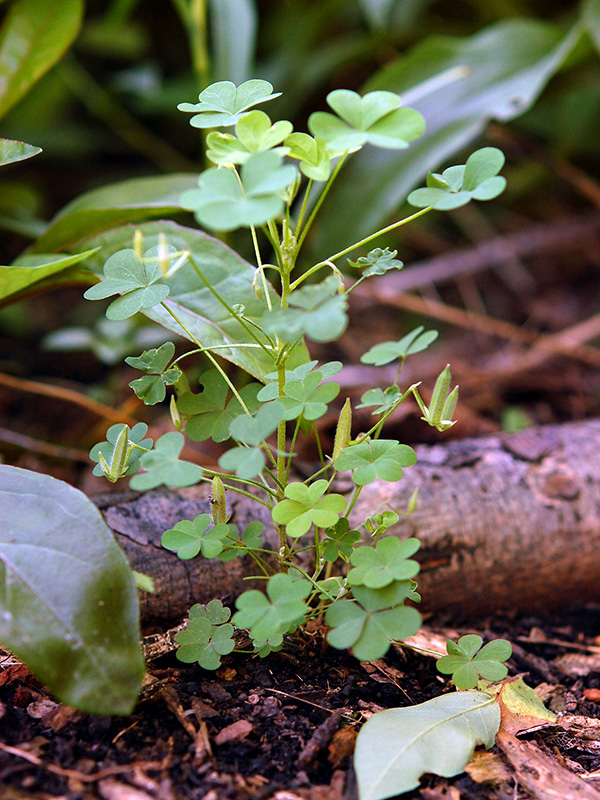
This one is wood sorrel (Oxalis stricta). Even though it’s a native, it’s way too prolific in our landscape. (Here’s its native range in the U.S.)
It has little yellow flowers, but in this photo, the flowers have become seed pods and thus we’ll have more and more.
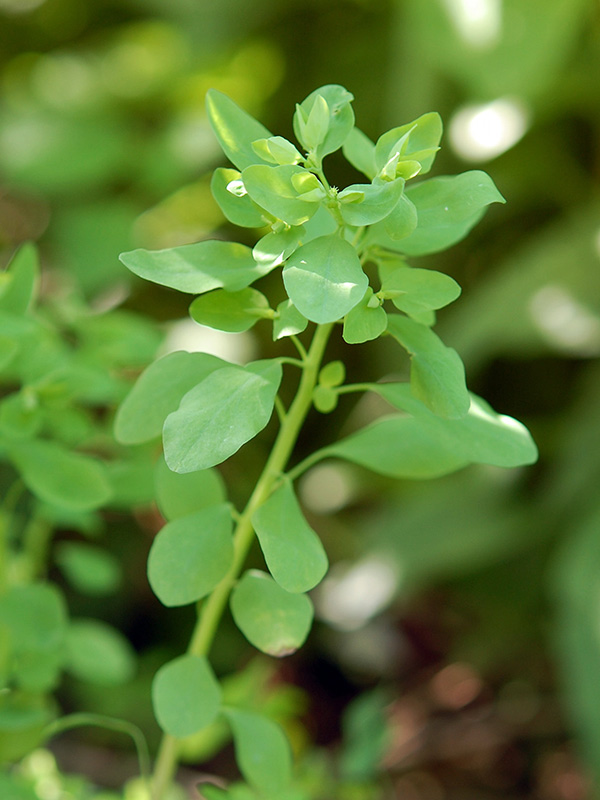
Petty spurge (Euphorbia peplus), a non-native, doesn’t have noticeable flowers. (Here’s where it has invaded the U.S. and here’s a description.) The flowers are greenish and blend in with the leaves.
Wood sorrel and petty spurge have an unholy alliance to fill every available bare spot in our whole yard. I don’t think they do any ecological harm, but I don’t see much value to them either. I just don’t like them, and they sure are frustrating!
Category 2 – more than annoying
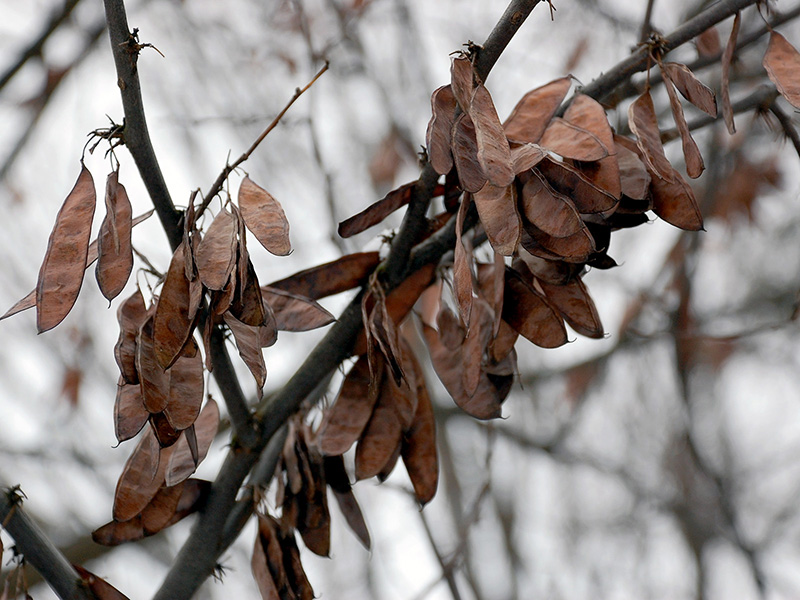
Redbud (Cercis canadensis) is kind of native (a bit farther south) and is beautiful in the spring. It also is a welcome source of nectar and pollen for bees in early spring.
BUT… seemingly every one of its multitude of seeds germinates and creates a real problem (unless I wanted a forest solely of redbuds). These are more difficult to keep under control since there are so many, and if they’re left to grow, they’re difficult to pull out even as seedlings.
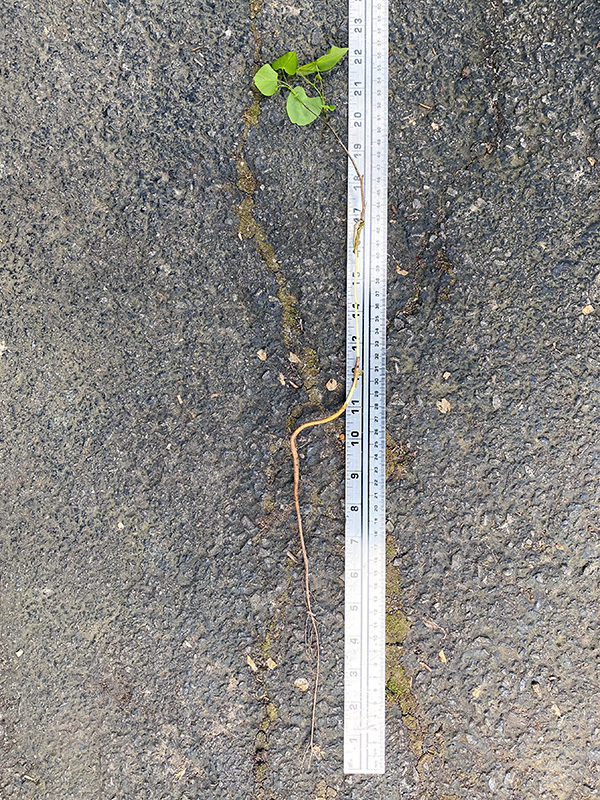
This shows why it’s so difficult to pull out redbud seedlings once they get established.
The part of the plant above ground is only about five inches, but there’s a lot beneath the surface and it’s difficult to pull out.
Even small little seedlings seem to have enough roots to make them difficult to get out.
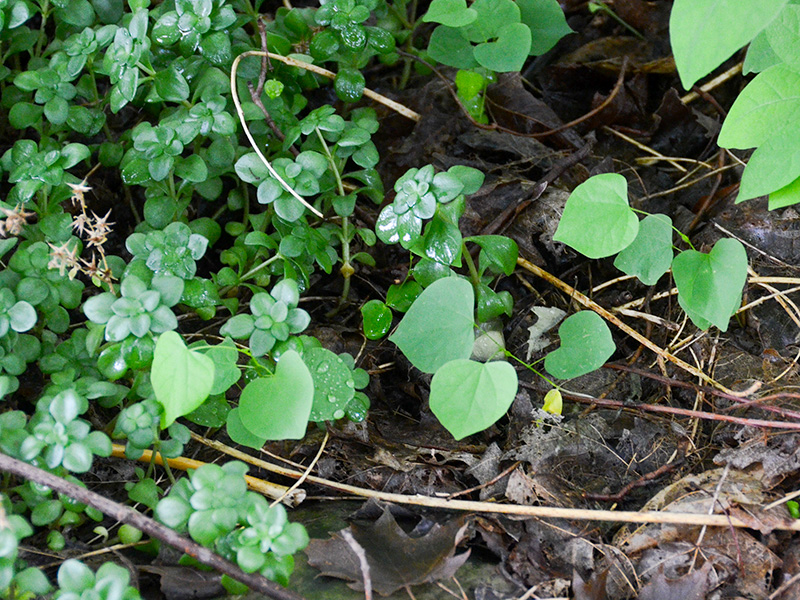
There are five redbud seedlings in this small area, and there are many, many more throughout the yard.
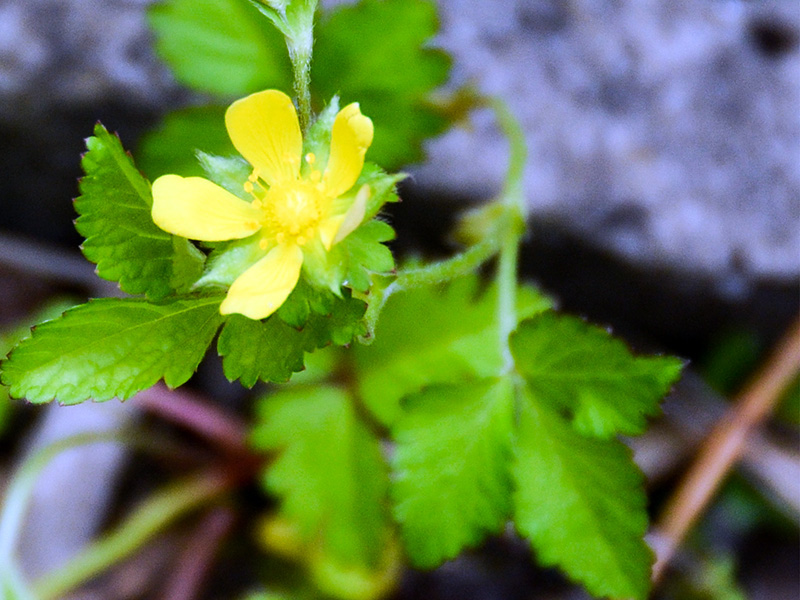
Mock strawberry (Potentilla indica) is non-native that’s more than annoying because it spreads so much.
NOTE: This has a yellow flower, not a white flower as does our native strawberry.
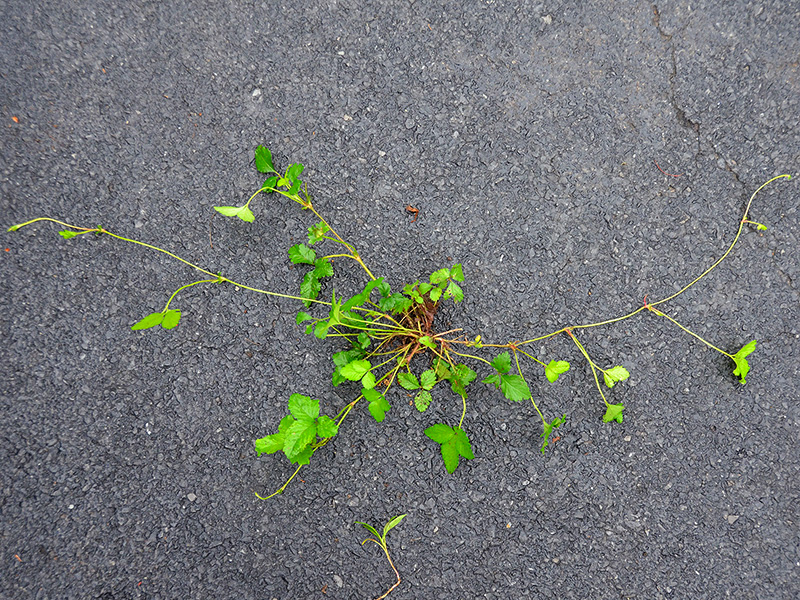
This shows ONE plant! You can see how it can spread throughout the garden.
Very annoying, but if I’m diligent over a number of years, I think I can get rid of it.
Category 3 – negatively impacts our landscape
Creeping bellflower (Campanula rapunculoides) has been here as long as we’ve lived here. For many years, I just left it because, after all, it had pretty blue flowers! How I now regret not getting rid of it when it would have been much easier!
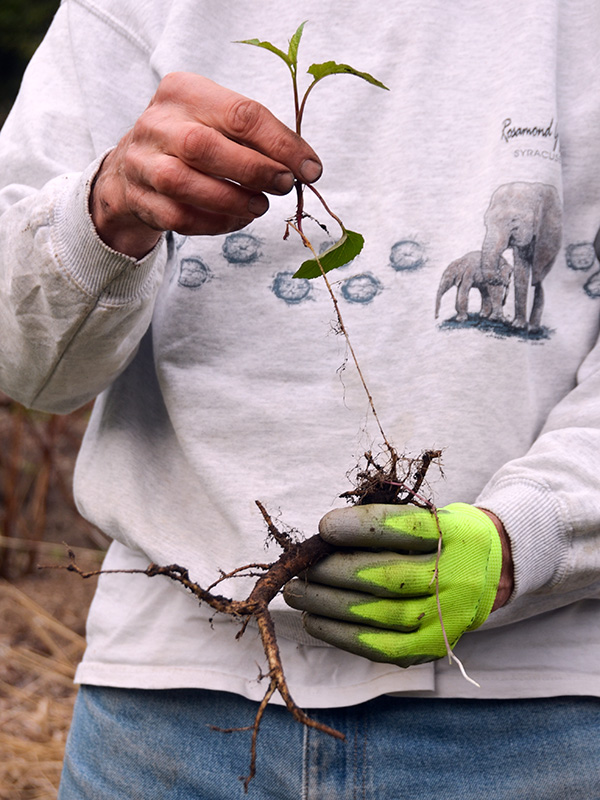
This is why it’s so difficult to eradicate. You can see how far below the surface the root is. Just getting rid of the top doesn’t do the trick.
And this is another plant that is actually sold!!
(See Resources below for some ideas about eradicating it.)
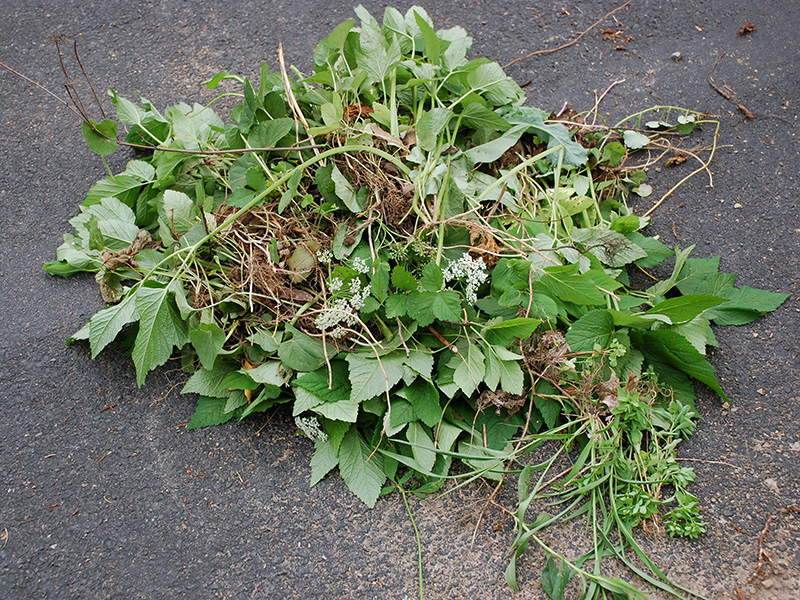
Bishops weed (Aegopodium podagraria) could present similar challenges, but we had only a few plants and fortunately we were able to eradicate it before it spread.
And amazingly this monster is still being sold here in NYS, though it’s banned in some other states.
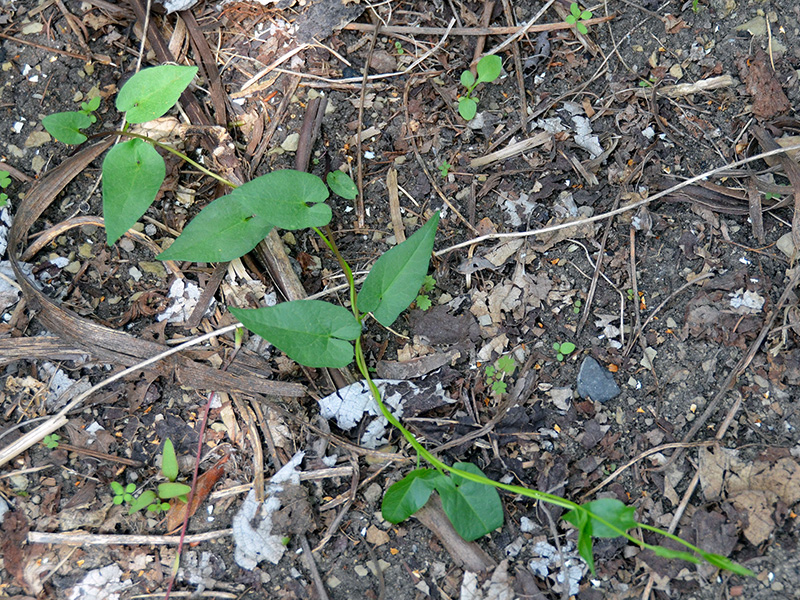
Hedge bindweed (Calystegia sepium) is also known as wild morning glory and other names.
Yes, this is native. Yes, the flowers are (kind of) pretty. And yes, this is a horrible plant that’s invading my hedgerow!
For years, I made the mistake of waiting until I saw the flowers before trying to pull it out. By that time, it had wound around the stems of plants so much that it was hard to even find where it started.
In 2021 I resolved to tackle this when it was still sending up shoots in the spring and then monitor it all summer for any I’ve missed. Now in 2022, I’ve re-resolved to tackle this, but I expect I’ll need to continue this process for a few years. It will be worth it if I succeed!
Category 4 – Harms the world beyond my yard
These plants, of course, are the non-native invasive plants, which warrant their own section.
Resources
- Audubon:
- Univ. of Michigan Invasive of the Week:
- Creeping bellflower – some good strategies for removing it
- Univ. of Connecticut Extension:
- New York Times:
Reflections
But I realize now that to help one’s garden overmuch is to hinder it. I must have been living in another world when I wrote, only a few years ago and with considerable satisfaction, of the view from my window of our gardens “bare to their bones, neat and clean, nicely edged, weed-free.” Now I see that there is teeming life down there that, neatly and cleanly, I was starving. Why was I not replacing in their beds the limp bodies of weeds I had uprooted? What was I doing cutting flowers to the ground, raking them away, bagging grass clippings, blowing autumn leaves from underneath the hedge? I was robbing the life savings from my garden beds, exposing them to the elements to leach their lifeblood away.
~ Sara Stein, Noah’s Garden: Restoring the Ecology of Our Own Back Yards, 1993, pp. 134-135
Weeds coerce my attention as tenaciously as a toddler hanging on my knees. They raise all kinds of questions, not the least of which is what they are doing in my garden in the first place.
~ Sara Stein, My Weeds: A Gardener’s Botany, 1988, p. 7
The insects and their actions and reactions are the garden’s backbone. As many insects quietly go about their business of clearing broken bits of plants from the soil’s surface, decomposing dead material, incorporating organic matter into the soil, dispersing animal droppings, gathering nectar, pollinating plants, chewing on leaves and flowers, and serving as dinner for birds and bats, another hoard of insects—the predators and parasitoids—are doing their best to find every last one and kill them. Such is life.
~ Eric Grissell, Insects and Gardens: In Pursuit of a Garden Ecology, 2001
